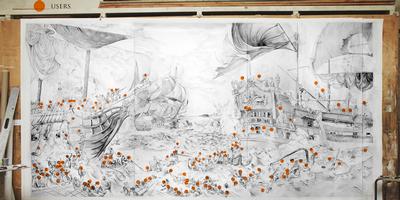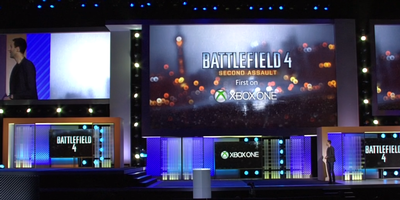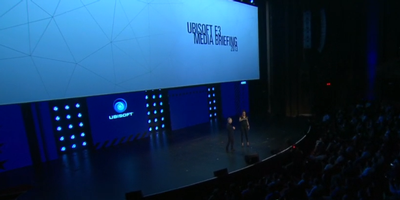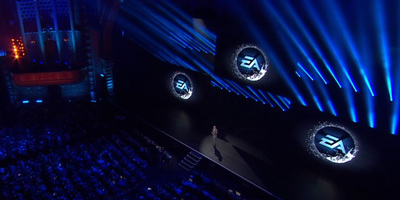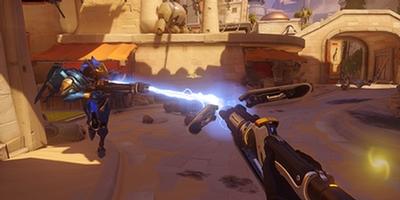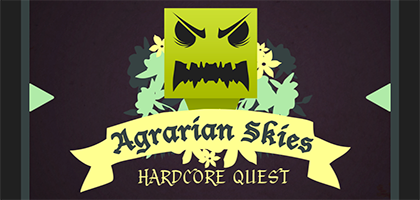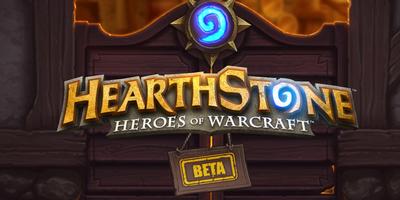- by Amanda "Mandifesto" Orneck
- Posted on June 24, 2013 @ 10:00 PST

E3 2013 might be over and done with, but its influence will be felt for months,perhaps even years. Personally, I've been thinking about the games I saw at the show, and what these titles say about where game design is headed. Each year we are introduced to the front runners of the industry, the big titles that will drive trends in gaming for 2014. This year is even more influential because we are going to be witnessing a whole dirth of launch titles, models for how other developers will approach the new consoles from Microsoft and Sony.
So here are the trends that I noticed during my time at the Los Angeles Convention Center. I expect to see many developers implementing these mechanics and themes in their games going forward on into 2014 and 2015. It's important to note that this is based on the games I got a chance to see, not on a comprehensive list of games at E3.
Open Worlds
Examples: Dead Rising 3, Infamous Second Son, Destiny, The Witcher 3
Load screens are banished from many of the titles seen at this year's E3. Instead of segmenting their environments, developers are moving toward expansive environments that let the player decide how they want to explore the content provided. It's not that there have never been open world games -- we've had open world games for decades now. Now with the processing power of the next gen console, developers are no longer forced to create segmented universes when they don't make sense. Game developers have been limited by the processing power of the current consoles, and have had to create gated content that limits players to a certain map size. Now maps can be huge.
The Witcher 3 boasts a map that can fit the first two game worlds inside just one small archipelago of the current map. Dead Rising 3 is larger than the first two games combine with ample room to spare. All of a sudden players can choose how they interact with the game's story -- with a game that can flawlessly without RAM usage limits, and therefore without loading screens between connected areas. I expect many more developers will forgo instanced map areas in their singleplayer titles and will instead embrace the space. It's time to push the limits of the next gen hardware and see where it takes us.
Realism
Examples: Ryze: Son of Rome, Dark Sorcerer
Now that game developers have heftier hardware to work with, they can accomplish a lot more with the realism in their games. Ryze: Son of Rome for example provides players with a (mostly) realistic look into what Roman warfare was really like around the turn of the last millennium. The player gets the opportunity to not only fight one-on-one, but also to join up with their phalanx for tactical-based maneuvers. I've talked a lot already about processing power and how it limits stage design in games, but it also limits exactly how accurately a game can portray their characters. In Ryze, every NPC has individual facial expressions, meaning when groan and wail and wince as they are cut down on the battlefield. Hundreds of models can be on the screen at once, with explosions and carnage all around them. This takes a lot of computing power, but Crytek was able to build Cry Engine 3 with the ability to render all of this in real time, simply because the consoles are so much more powerful. I see many more games coming in this vein, providing realistic gameplay experiences because they can finally fit so much information on the screen at once.
Dark Sorcerer is another example of the extreme realism available to developers in this new console generation. This tech demo from the folks at Quantum Dream highlights exactly ultra realistic expressions and mannerisms in an effort to show off the delicacy of expression that is available to developers creating for the PlayStation 4. These are the folks behind Heavy Rain, so they know a thing or two about realistic expression. Maurice the Goblin alone has 700,000 triangles -- and none of the footage in Dark Sorcerer is pre-rendered. It's almost as if we've jumped the Uncanny Valley, Bart Simpson style, and are leaving it in our wake. The console game can now take on the same nuance that a PC title can, and I firmly believe AAA titles will start taking advantage of this very soon.
Seamless Multiplayer
Examples: Destiny, The Division, The Crew, Titanfall
During more than one game demo at this year's E3 I saw singleplayer and multiplayer experiences blended together in innovative ways. In Titanfall, for instance, players can proceed through the singleplayer storyline until major moments when they join up with other players to take down major bosses. The Crew allows you to invite your friends to a race without a lobby. You just add them into the race and they automagically appear on the street beside you. Tom Clancy's The Division also featured a drop in/drop out system that even let players engage with the game from their mobile device, manning a drone from a smartphone or tablet. It seems that developers are beginning to blur the line between solo and group play, and this trend can only mean great things for the future of the industry. Once you remove UI barriers to play, the gamer can fully immerse themselves in the gameplay experience.
Innovative mobile device integration
Examples: Project Spark, Dead Rising 3, The Division, Ryze
Just about everyone has a smartphone or tablet these days, and many games at this year's E3 featured unique ways to integrate these ubiquitous devices into gameplay. While Sony did mention in an off-hand sort of way their PSVita integration with the PlayStation 4, the biggest buzzword at the convention was Smartglass. Microsoft has set up a platform that just begs to be played with, and plenty of developers have stepped up to the challenge. As I mentioned before, Tom Clancy's The Division allows players to enter the game and man a drone even when they are away from home. In Dead Rising 3, the player can receive another entire storyline through their tablet, one which gives them access to a virtual smartphone completely with its own apps, wallpapers and ringtones. Project Spark uses Smartglass to provide multiple levels of game creation, with tablet owners getting to hand draw in rivers, lakes, and streams. Even Ryze: Son of Rome makes use of Smartglass, letting players watch their friends' gameplay videos and challenge them to beat their score.
The possibilities with this type of mobile integration are endless, and no doubt game developers will continue to flock to Smartglass as they look to create deeper levels of player immersion.
AAA Free-to-Play Gaming
Example: Killer Instinct
One game at E3 really stood out to me as taking on a completely new way to pay for AAA titles. MMOs these days are blending free-to-play and pay-to-play models, but Killer Instinct is the first fighting game to take up the free-to-play banner. The first character is free to play as long as you like, and as you get addicted to the game, you can buy additional characters along the way. This is brilliant; gamers can get invested in the game, and pay for the parts of the game they want. If more game developers adapted their pricing models like this it would mean great things for both developers and players. Gamers would only pay for what they considered to be essential parts of the game, and developers would receive more money overall from the players by releasing the game in chunks. The trick of course is to create a robust enough game that even the free-to-play experience feels like a full pay boxed product. Then players won't mind dropping 10 bucks a shot for extras.
I cannot wait to see what developers do with the new hardware tools available to them. From what I've seen at this year's E3, it's going to be a great couple years for gaming.
- PlayStation 4
- Xbox One
- Crytek
- Quantic Dream
- Dead Rising 3
- Infamous Second Son
- Killer Instinct
- Project Spark
- Ryse: Son of Rome
- SmartGlass
- The Crew
- The Dark Sorcerer
- The Dark Sorcerer: A Next Gen Comedy
- Titanfall
- Tom Clancy's The Division
- E3 2013
- E3 Expo
I am definitely all for games that head towards no loading, open world, tablet compatible, pay as you go, next-gen goodness !


